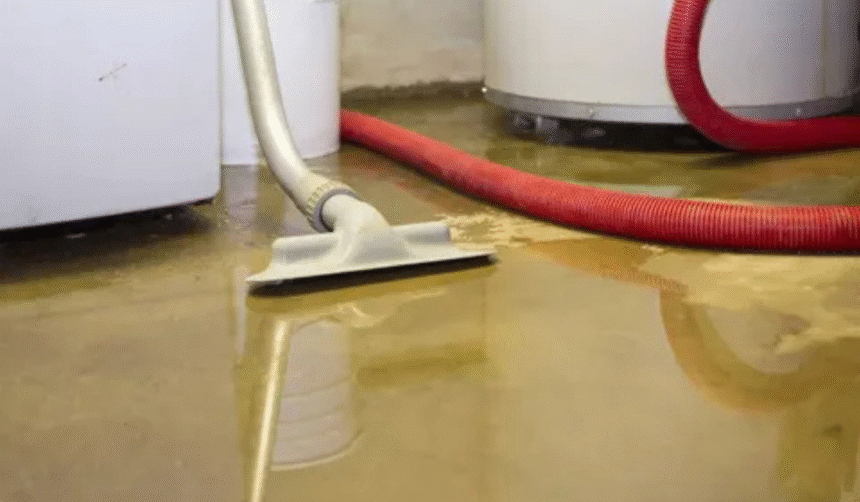Introduction
Identifying early signs of basement water problems is essential for every homeowner who wants to keep their property safe, comfortable, and healthy. Basements are naturally more vulnerable to moisture and water intrusion due to their location below ground level and contact with soil, making regular inspection and awareness critical. Knowing what to look for and acting quickly at the first signs of trouble helps you avoid expensive structural damage, preserve indoor air quality, and protect valuables stored in basement spaces. This comprehensive article explores the most common symptoms of basement water problems and provides clear guidance to help homeowners take charge of their home’s well-being.
Understanding Basement Water Intrusion
Water intrusion in basements arises from various sources. It could be from external factors, such as poor grading, overflowing gutters, and inadequate drainage, or internal sources like plumbing leaks and condensation. Hydrostatic pressure, created when water accumulates in soil around the foundation, can force water through wall and floor cracks. Poorly sealed windows, aging waterproofing barriers, or missing vapor barriers also contribute to the risk. Recognizing how water can infiltrate your basement is vital, as is knowing that preventive measures—ranging from simple gutter maintenance to professional basement waterproofing solutions—can mitigate most potential issues. With a proactive approach, detecting and addressing problems before they cause extensive or lasting harm is possible.
Musty Odors and Mildew
A consistent musty smell in the basement is often one of the earliest warnings of excess moisture. This odor is generally caused by mildew and mold growth, microorganisms that thrive in damp, poorly ventilated environments. Even if mold isn’t visible, its presence in the air signals high humidity levels or water seepage nearby. Homeowners should never dismiss persistent mustiness, as inhaling mold spores can affect health and signal hidden leaks or condensation. Thoroughly investigating the source of these odors, including inspecting behind stored items, carpets, and wall cavities, helps identify and remedy moisture before the infestation becomes widespread.
Visible Water Stains and Discoloration
Water spots or brownish stains on basement walls, ceilings, or floors indicate past or ongoing leaks. Stains tend to appear near the base of walls, especially after heavy rain or snowmelt. Over time, these marks become darker or grow in size, suggesting that the issue is recurring. Even faint discoloration—yellow, brown, or gray hues—along basement surfaces should raise concerns. Close inspection of corners, window wells, and seams where floors meet walls will often reveal subtle staining before obvious flooding or puddles occur. Monitoring these areas consistently makes it easier to pinpoint problems and intervene early.
Cracks in Basement Walls or Floors
Small cracks in basement concrete are common, especially in older homes, but they should be constantly monitored for signs of water ingress. Vertical, horizontal, or stair-step cracks may allow water to seep, especially during heavy precipitation or rapid snowmelt. Pay special attention to fissures that grow larger or leak during storms, which may indicate ongoing foundation movement or pressure from saturated soil. Routine inspection of poured concrete and block foundations can confirm whether cracks are stable or worsening. Marking the ends of cracks with a pencil to observe potential growth is a practical strategy for ongoing monitoring.
Efflorescence and White Powder
Efflorescence is a chalky, white powder left behind when water carrying dissolved salts migrates through concrete or masonry and evaporates on the surface. This phenomenon doesn’t damage the surface but is a strong sign of water moving through the walls. If you see white powdery deposits along block or stone foundations, it’s time to investigate for leaks or exterior grading issues. Cleaning efflorescence will temporarily restore the appearance, but the underlying moisture pathway must be addressed. Observing these mineral deposits early can prevent more serious water damage over time.
Peeling Paint and Deteriorating Finishes
Paint bubbling, flaking, or peeling from basement walls and floors is another warning sign. Moisture trapped beneath finishes interrupts adhesion, which causes paint to lift off, reveal damp patches, or even develop soft spots. Stains on drywall, warped baseboards, or swollen trim often point to repeated water contact in finished basements. Note any unusual changes in the color, texture, or stability of painted or finished surfaces, especially behind furniture or storage where monitoring is less frequent. After stopping water movement, timely action to repair and reseal these areas restores both function and appearance.
Damp or Warped Building Materials
Building materials in the basement, such as wood framing, paneling, or flooring, often exhibit warping, buckling, or softness when exposed to moisture. These effects are rarely isolated and often spread as water continues to intrude. By pressing or tapping gently, check for springy floors, soft wall panels, or rusted metal supports. Carpeting that feels damp, smells musty, or squishes underfoot may have absorbed moisture from a leak or high humidity. Investigating and drying out these materials immediately helps avoid costly replacements and secondary problems such as rot and mold.
Condensation and Humidity Levels
Condensation on basement windows, pipes, tanks, or walls is a visual indicator of excessive humidity. Water droplets form when warm, moist air meets cool surfaces, indicating inadequate indoor moisture control. Consistently high humidity readings, typically above 60%, foster an environment for mildew, corrosion, and discomfort. Monitoring humidity with an inexpensive digital hygrometer helps homeowners monitor indoor air quality. If condensation or fogging is frequent, increasing ventilation or running a dehumidifier can bring the situation under control. Preventive strategies also include sealing leaks, installing vapor barriers, and insulating cold surfaces to stop condensation from becoming a persistent issue.
Surface Puddles and Standing Water
Any puddles or noticeable wet spots on the basement floor should be taken seriously, regardless of size or frequency. Surface water can indicate leaks through cracks, pipe bursts, seepage from nearby gutter downspouts, failed sump pumps, or seasonal groundwater rises. Homeowners should inspect during and after rainstorms to identify problem sources. Standing water increases the likelihood of larger structural issues, rapid mold growth, and damaged personal items. Once puddles are observed, a thorough examination of internal and external plumbing and property grading is recommended to identify and resolve the cause.
Foundation Shifting or Settlement Signs
When water accumulates around the foundation, soil movement can cause the foundation walls or slab to shift, settle, or bow inward. Although such changes develop slowly, visible effects—like uneven floors, sticking doors, new cracks above basement windows or walls, and gaps where the wall meets the floor—should prompt immediate inspection. Some settlements are regular as houses age, but rapid or recent changes, especially in conjunction with wet weather or visible moisture, indicate a water problem affecting the foundation’s integrity. Monitoring and addressing these signs early can prevent significant, costly repairs in the future.
Sump Pump and Drainage Inspection
The presence and performance of your basement’s drainage system are crucial indicators of current or developing water issues. A sump pump should be checked regularly for proper operation—unusual noises, frequent cycling, or failure to eject water are signs of trouble. Clogged or broken discharge pipes may lead to backup into the basement. In addition, blocked outdoor drains, downspouts that terminate close to the foundation, and soggy landscaping near the basement walls all suggest water is not channeled correctly away. Periodic checks and maintenance of these vital drainage components are essential for detecting new risks and ensuring reliable basement protection.
Conclusion
Recognizing the early signs of basement water problems empowers homeowners to intervene swiftly and minimize potential damage. Paying careful attention to changing odors, stains, surface conditions, humidity, and drainage effectiveness enables prompt repairs and supports a dry, healthy living space. By understanding and regularly monitoring the warning signs described above, it is possible to extend your home’s life and safeguard its value and quality of life. A proactive, well-informed approach is the most effective way to prevent minor moisture issues from becoming significant structural or health concerns.






